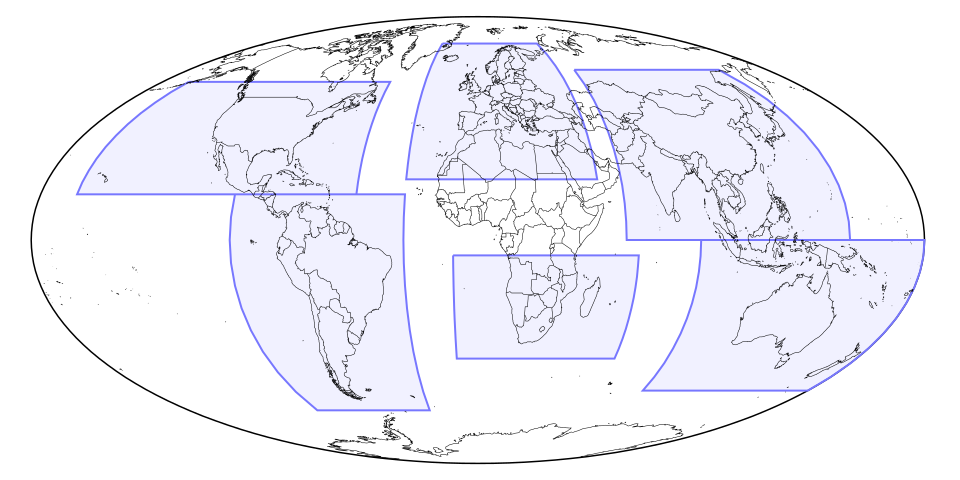Predictions of stellar occultations by TNOs, Centaurs and Trojans
This page presents the prediction of occultations by selected TNOs, Centaurs and Trojans of forthcoming months. These predictions are made in the framework of Lucky Star project (led by B. Sicardy) and in collaboration with groups from Paris, Meudon, Granada and Rio.
For specific campaigns, you can have a look to campaigns page.
Information about the predictions can be found in Assafin et al. (2010) for Pluto system predictions, Assafin et al. (2012) for the TNO predictions, Camargo et al. (2014) for TNO and Centaur predictions. Ephemerides of the selected objects come from Desmars et al. (2015) and they are regularly updated (see 'Ephemerides' section) thanks to observations from Minor Planet Center and our own observations made at ESO, Pic du Midi, Calar Alto, Sierra Nevada and Observatorio do Pico dos Dias, and also from astrometric positions coming from the Dark Energy Survey (Banda-Huarca et al., 2019). Ephemerides of TNO satellites come from the Genoid project (Vachier et al., 2012). Predictions make use of Gaia Data releases, currently Gaia DR3 (Gaia Collaboration, 2022) for the position of the stars and the proper motions.
You can choose to display the events only visible for a specific place or a specific observatory:
IMPORTANT: If you observe one of these predicted events, please report and upload your data on Occult Portal. Due to the success of the project and the large number of observed events, we have developed the portal in order to help in the analysis and to guarantee your participation in later publications.
For general comments or questions about this page, please write to J.Desmars.
|
(East-Asia, Europe & North Africa, Oceania, Southern Africa, North America, South America)
|
||
Information about the table:
- Predictions can be filtered by date, object, zone, type, and/or magnitude;
- The G* magnitude is the G magnitude (from Gaia), normalized to a body moving at 20km/s in order to enhance very slow events (G* = G + 2.5 log (v/20) with v is the velocity in the skyplane (km/s));
- Zones are defined approximately as large areas covering East-Asia, Europe & North Africa, Oceania, Southern Africa, North America, South America according to the map;

- Type is defined by range of semi-major axis a. For simplification, we define any object with 4.9 ≤ a ≤ 5.5 au as Trojan, 9.0 ≤ a ≤ 29.8 au as Centaur, 29.8 ≤ a as TNO;
- By clicking on one map, you will find a specific page of the event, with the prediction map, occultation circumstances and the field of view with the occulted star.
- As the table may be long to display, events with a solar elongation greater than 20° are considered and filters on date and magnitude are initially applied. Do not hesitate to change the filters to see all the events.
Information about the maps:
- The straight and continue lines represents the shadow limits considering the estimated radius; when the shadow crosses the Earth's surface, the path is projected on the Earth;
- The blue dots are separated by a one-minute interval and the big blue dot corresponds to the nominal occultation time (which is the geocentric closest approach);
- The arrow shows the direction of the shadow motion;
- The 1-σ precision along the path is represented by the red dotted line;
- The G*, RP* and H* parameters are the G (visible from Gaia), RP (red photometry from Gaia) and H (from 2MASS) magnitudes, normalized to a body moving at 20km/s in order to enhance very slow events (G* = G + 2.5 log (v/20) with v is the velocity in the skyplane (km/s));
- The body offset is at the upper right corner, if JPL ephemeris is used;
- Areas in dark grey correspond to full night (Sun elevation below -18 degrees) and areas in light grey correspond to twilight (Sun elevation between -18 and 0 degrees) while daytime is in white;
- Be careful, that the dates are in Universal Time, the night of the event may begin the day before.

